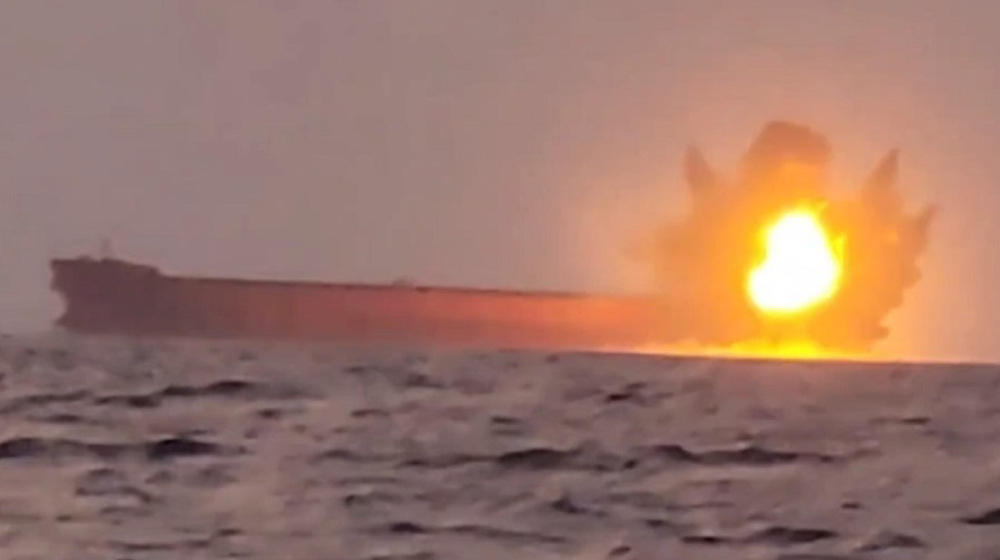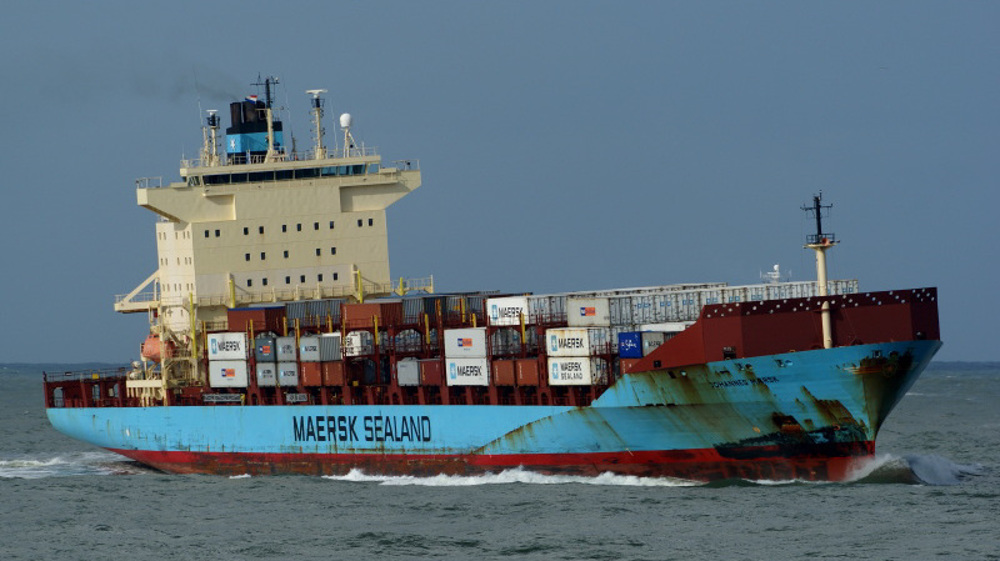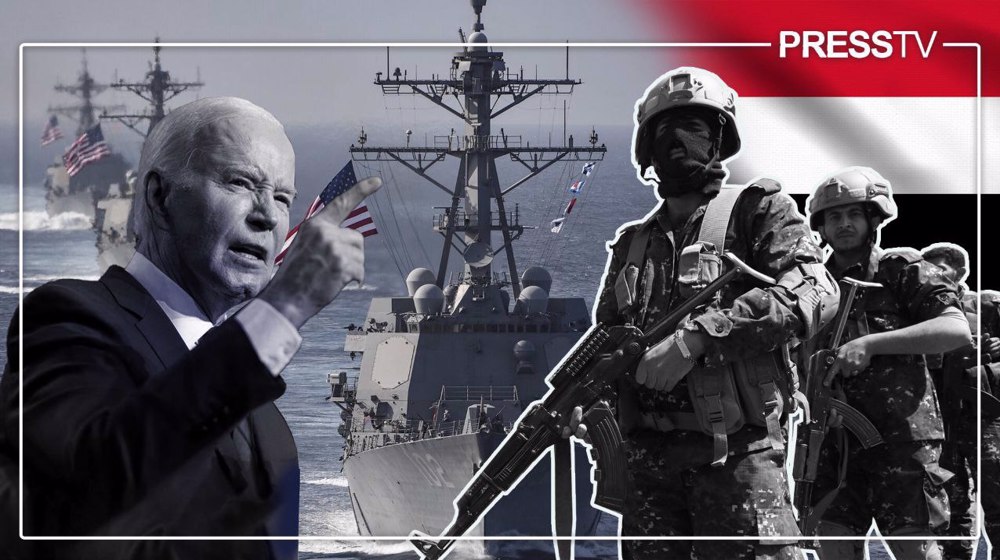Explainer: Why is Yemeni drone boat ‘Tufan al-Modammer’ a prized military asset?
By Ivan Kesic
The Yemeni military on Sunday unveiled an indigenous unmanned surface vehicle (USV), dubbed Tufan al-Modammer, demonstrating a powerful new tool in the Red Sea blockade of the Israeli regime.
They also released a video of its recent destructive strike against the Transworld Navigator ship during an anti-Israeli operation in the Red Sea on June 23, showing the drone boat moving towards a ship, before pounding into the target.
The unveiling of the military boat marks a new chapter in Yemen’s military campaign in solidarity with the people and resistance in Gaza amid the eight-month-long Israeli-American genocidal war.
What are the USV's technical specifications?
Along with the video of the strike on the Transworld Navigator, the Yemeni military listed some brief technical features of the drone boat, highlighting their growing naval military capabilities.
Tufan al-Modammer (Flood of Destruction) is a Yemeni-developed USV that carries a 1,000- to 1,500-kilogram warhead of high destructive capability, sails at a speed of 45 nautical miles per hour (over 83 km/h), and is able to perform missions in all maritime conditions.
According to Yemeni military sources, the drone boat is equipped with advanced technology, with both manual and remote control capabilities.
Although it entered operational service this month, the Tufan al-Modammer has been doing rounds since the annual military parades of 2022 and 2023, where it was displayed under the name Tufan-3.
At the time, Yemeni military sources described it as a drone boat with the ability to evade radar systems, carrying a 500 kg warhead and reaching a speed of 52 nautical miles per hour (over 93 km/h).
Yemeni forces launch new operations against multiple vessels
— Press TV 🔻 (@PressTV) June 29, 2024
Press TV's @lat6ff reports from Sana'a pic.twitter.com/dO0am2HDot
What is the background of Tufan series development?
Two earlier models, Tufan-1 and Tufan-2, are also known from the same parades, although the latter was seen at least five years ago, during operations against the Saudi-led coalition.
On June 21, the Yemeni military also released a video of Tufan-1 testing, as well as some of its specifications, nine days after the same drone boat was used in the attack on the bulk carrier Tutor in the Red Sea.
After being dealt substantial damage by Yemeni drone boats, which attacked the engine room and the center part of the Tutor's hull, the 229-meter-long ship reportedly sank off the coast of Eritrea on June 18.
The shorter-range Tufan-1 carries up to 150 kg of explosives and travels at a maximum speed of 35 nautical miles per hour (65 km/h), and its estimated length is 5 meters.
It has a cockpit in the center which is used by the human pilot during transport or preliminary maneuvering before the attack, but it could also be pre-programmed to travel to its target and detonate in proximity if needed.
According to previously available reports and visible evidence, Tufan-2 is a slightly longer and wider version than its predecessor, with two cockpits, a speed of 41 nautical miles per hour (76 km/h), and a 400 kg warhead.
In terms of size, speed and payload, the Tufan-3 is a continuation of the development of the Tufan drone boat series, with a length of about 10 meters and also with two cockpits.
‘Trio of Evil’ targeted: Yemen unleashes attacks on Israel, US, UK shipshttps://t.co/sq9KSk5MLw
— Press TV 🔻 (@PressTV) July 2, 2024
What is the biggest advantage of drone boats?
All three models are constructed of fiberglass and have a simple design derived from speedboats, making them cheap and easy to manufacture, compared to aerial drones and especially ballistic and cruise missiles.
The propulsion seen on all three models is commercially available outboard motors, such as the Yamaha 200 HP 2-stroke, which is again a great advantage compared to the propulsion of other weapons.
While rocket and UAV engines are expensive and complicated to manufacture, often affected by US-imposed sanctions, control of outboard motors is almost impossible because only the aforementioned Japanese company produces millions of units per year.
Sticking to those cheap designs and widely available materials and engines, the Yemeni engineers produced a lethal weapon with huge warheads, capable of sinking large merchant and military vessels.
Their destructive power is equivalent to dozens of aerial drones or several quasi-ballistic missiles, and they hit the very sensitive waterline, which often leads to sinking.
Modern warships and naval bases have countermeasures against drone boats, however, the defense of cargo ships violating the anti-Israeli embargo in the open waters of the Red Sea and Indian Ocean is next to impossible.
Even the protection of warships is not fully ensured, as evidenced by the case from 2017 when a Yemeni drone boat hit and severely damaged a French-built Saudi frigate, which is considered the first such successful attack in the history of naval warfare.
Yemeni drone boats of the time, converted from speedboats, have today taken on a new, much more modernized dimension and are one of the key tools in imposing an embargo against the Israeli regime.
Yemen releases video of sinking ship during anti-Israeli operation https://t.co/WWLCJmfo4h pic.twitter.com/YI40U27Slw
— Press TV 🔻 (@PressTV) June 20, 2024
What was the target of the new drone boat?
The target of the Yemeni drone boat was a 292-meter-long 178,000dwt bulk carrier, sailing under the flag of Liberia, and belonging to a company that violated the ban imposed by the Yemeni military on entry to the ports of occupied Palestine.
Last week, the US military confirmed that Transworld Navigator was targeted while transiting the Bab al-Mandeb. Americans claimed that it was targeted for the fourth time, but Yemeni sources were quoted as saying that it was targeted for the second time.
The ship's crew reported that there were no injuries, but the voyage is over for them and according to the latest information, they have returned to their home countries, while the damaged ship needs repairs.
During the same 24 hours, the 37,600dwt product tanker Stolt Sequoia in the Indian Ocean was also hit by Yemeni forces with cruise missiles, according to Yahya Saree, the spokesperson for the Yemeni army.
Over the past several months, the Yemeni armed forces have targeted dozens of Israeli ships or other vessels bound for the occupied territories in the Red Sea and the Gulf of Aden, in support of the Palestinian resistance in the Gaza Strip.
The Yemeni armed forces have also recently intensified attacks on American and British vessels and warships in retaliation for their aggression against Yemen, and said they remain committed to continuing such operations until the Israeli regime stops its attacks on Gaza.
Yemen’s UAE-allied separatist leader flees to Abu Dhabi via Somaliland
VIDEO | Press TV's news headlines
Trump floats ‘Dream Military’ fueled by record $1.5-trillion budget
Iran: US interventionism aimed at inciting violence, terrorism
VIDEO | Tunisian parties denounce Trump’s foreign policy as violation of intl. law
Trump’s immigration crackdown turns deadly; president says killer acted in ‘self-defense’
VIDEO | Trump renews highly aggressive rhetoric towards Iran
VIDEO | Transatlantic tensions: Greenland















 This makes it easy to access the Press TV website
This makes it easy to access the Press TV website